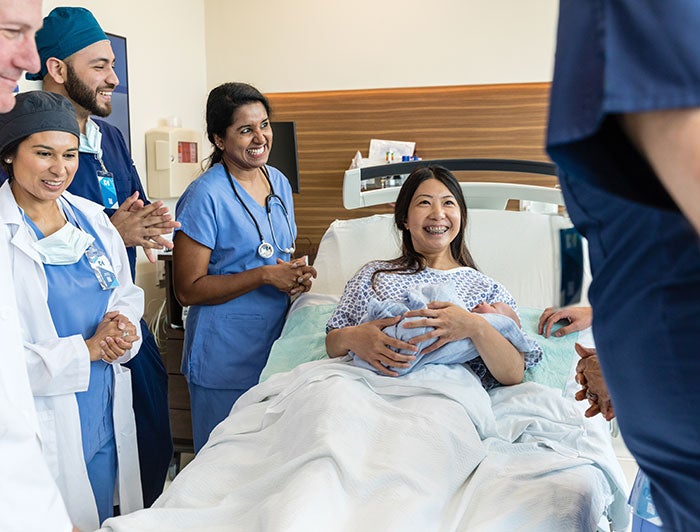Staying on the same page: How ‘TeamBirth’ helps Providence hospitals support pregnant patients

When it comes to childbirth, a critical component of a positive and empowering experience is communication, and something as simple as a whiteboard can make a major difference. That’s why two Washington state-based hospitals in the Providence health care system kicked off TeamBirth, a communication-focused initiative to enhance the birthing experience and improve outcomes for patients and their babies.
TeamBirth, launched by Providence St. Peter in Olympia and Providence Centralia in Centralia, is an industry-standard process that focuses on collective communication among all people involved in the birthing process. It’s meant to deliver a safer, more dignified childbirth experience. The TeamBirth model is designed to ensure that all stakeholders — the patient, their support person and their care team — are on the same page when it comes to birth.
One of the model’s most important elements is the installation of a shared whiteboard in all labor and delivery rooms, which is used to outline care plans and progress for the patient and the baby. The care team and patient complete the whiteboard together and update it regularly with information like the patient’s pain management preferences, whether they want to breastfeed and when the next team huddle will be.
“Research tells us that effective communication between a care team and their patients is key to safe childbirth,” said Val Higginbotham, Providence women’s and children’s service line director. “We have always worked to communicate well with our patients, but we have quickly learned how effective this model can be to improve both communication and birth outcomes.”
TeamBirth, which was developed and rigorously tested by Ariadne Labs, has been implemented in more than 100 hospitals across the U.S. and Sweden. St. Peter and Centralia hospitals are among a group of hospitals that launched the program with support from the Washington State Hospital Association.

